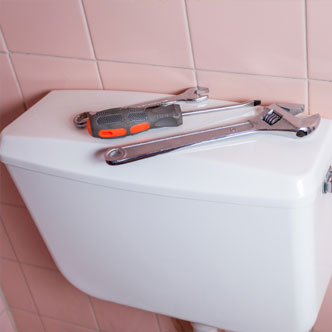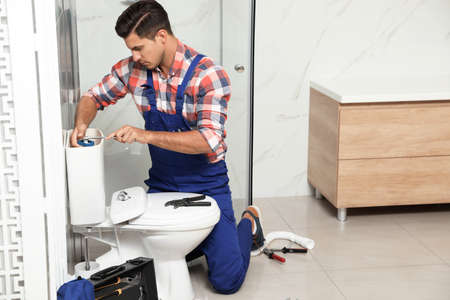The content in the next paragraphs in relation to Common Signs of a Faulty Toilet is exceptionally enjoyable. Don't overlook it.

Plumbing issues in the house don't worsen than a malfunctioning toilet. Faulty or poorly working toilets are a headache to house owners. Picture doing your organization in the restroom, and the bathroom won't flush. If it's a shared bathroom and somebody else requires to utilize it, it comes to be unpleasant. In various other cases, no matter how much you purge, the water appears unable of washing the whole thing away.
There are numerous signs that your commode may be defective, and we will quickly take a look at these signs as well as events that, when seen, you need to contact an expert plumbing service to either take care of the bathroom or reinstall it.
Results of Faulty Toilets
Damaged commodes can hinder your health and wellness as well as trigger an increase in energy expenses. Defective commodes can likewise boost the danger of flooding and obstructing.
Bathrooms don't last forever, and also like every other thing, they can outlast their functions and also require a substitute. There are some signs and symptoms that go along with a defective commode, and your ability to bear in mind of them promptly as well as call experts can conserve you a great deal of dangers.
1. Split in the Storage tank
The first sign that your Tank may be broken is the visibility of water puddles near the base of your commode. Splits in the Container are sometimes tough to identify, particularly if it's simply a tiny one somewhere below the waterline. When you see water settling on your toilet base, it is most likely a sign that your Container has actually split, and you require to include the plumbings to discover the place and also either fix it or replace it.
2. Leaky Toilet
Unfortunately, the only means you may realize you have a leaky bathroom is when the water bills keep going up. Leaky toilets are terrible due to the fact that they can cause whole lots of damage in the house, consisting of creating a room for mildews and molds, ruining the floor covering, and also if the defective bathroom is in an upstairs restroom, it can cause issues to rooms under it.
3. Clogs
Obstructing toilets happen quite regularly, as well as every person experiences it every now and then. If your commode stops a lot more frequently, you might need to have it inspected. If you have children at home, the chances are high that they might have tried flushing toys or fabrics away at some point. A clogged bathroom positions a considerable threat to the sewage, specifically when products besides tissue documents and human waste are flushed down there. While a plunger can do a lot of the unclogging, you ought to call a professional if you discover that it happens really often. Your commode could require more than simply a diving to get back in good shape.
4. Weak Flush
If your toilet does not allow a whole lot of water down to flush everything, there could be a problem. Having to flush your toilet more than when or twice is tiring and also impacts the bills. In some situations, the water in the toilet dish is constantly running, and there is not sufficient to flush when you need to.
Let the Pros In
These are a few of one of the most typical root causes of a defective toilet, as well as now that you know, you certainly have a concept why there is always water at the base of your commode or why it does not flush properly.
When you observe these indications, promptly contact a professional. Our knowledgeable plumbing professionals can help restore your commode as well as get it back in excellent working conditions if you live in Pittsburgh.
A few of these faults are a measure of a need to change your commode. We also handle commode setups and replacements. With our many years of experience in the field, our solutions are unsurpassable.
Imagine doing your company in the bathroom, as well as the toilet will not purge. Leaking bathrooms are horrible since they can trigger great deals of damages in the house, including creating a room for mold and mildews and also mildews, destroying the floor covering, and if the defective toilet is in an upstairs washroom, it can create problems to spaces under it. If your commode does not let a great deal of water down to purge every little thing, there could be a trouble. Having to flush your bathroom more than once or twice is tedious and impacts the expenses. In some instances, the water in the toilet dish is regularly running, as well as there is not enough to purge when you require to.
Possible Reasons Your Toilet is Leaking
A leaking toilet is one of the most inconvenient and costly plumbing problems that homeowners face. A common tell-tale sign of a leaking toilet is the formation of a puddle near the toilet or moisture spontaneously forming on the toilet’s tank. Another tell-tale sign is a toilet that keeps running or flushing even when it isn’t used. Under normal circumstances, about 27% of water usage comes from toilet flushing. Therefore, a running toilet due to leakage can have a major impact on your water bill if left unfixed.
Needless to say, toilet leaks, whatever the cause, need to be fixed ASAP. If you notice that the toilet leak is rapidly progressing or if you have a plumbing emergency on your hands, reach out to our plumbing emergency experts who are available round the clock and try to shut off the water supply to your toilet while waiting.
However, if you have a minor leak happening with your toilet, you may want to figure out the root cause of it and decide your next steps from there. Well, you’re in the right place! This article covers the top 5 common reasons why toilets leak and how to spot them.
Leaking Supply Line
The supply line is the part of the toilet that supplies water into the tank of the toilet for flushing. The supply line is typically found outside of the toilet and it connects to two points: the supply valve which is typically installed into the wall and to the toilet’s tank. These lines are usually made of either plastic, vinyl, or stainless steel. Problems can arise when the joints of the supply line become weak or loose due to either wear and tear or accidental physical impact. The solution to this problem is typically to replace the supply line altogether.
Broken Wax Seal
The wax seal is located under your toilet where it serves as an impermeable barrier to keep flushed water and sewage from leaking outside. Since this part is enclosed, the most common reason why it gets damaged is simple wear and tear. Replacing the wax seal is a complicated process that involves actually removing the whole toilet from its place. Out of all the causes listed here, this one involves the most risk and should not be considered for DIY. Slight mistakes in the process can leave you with even worse problems.
Damaged Toilet Tank
The toilet tank is a part we’re all familiar with. This holds all the water for flushing as well as the toilet’s flushing mechanisms. Over time, the toilet tank can sustain cracks because of age or physical impact. Fortunately, really small cracks won’t mean that you need to replace your toilet. These can be quickly remedied using a sealer. Larger cracks, however, may get worse and could mean that you need to replace your toilet.
Damaged Toilet Float
The toilet float is located inside the toilet tank and is the ball that you can see floating on top of the toilet tank’s water. This serves to trigger the mechanism for refilling the water in the toilet tank when water levels run low. When this part is damaged, the fill valve of the toilet tends to run continuously. The common cause of damage to this part is wear and tear or inappropriate handling.
https://www.plumbwize.ca/blog/5-reasons-your-toilet-is-leaking/

I hope you enjoyed reading our post on Common Signs of a Faulty Toilet . Thanks so much for taking the time to browse our piece. Sharing is nice. Helping others is fun. We truly appreciate reading our article about Know When to Replace a Toilet.
Sink issue? Dial.